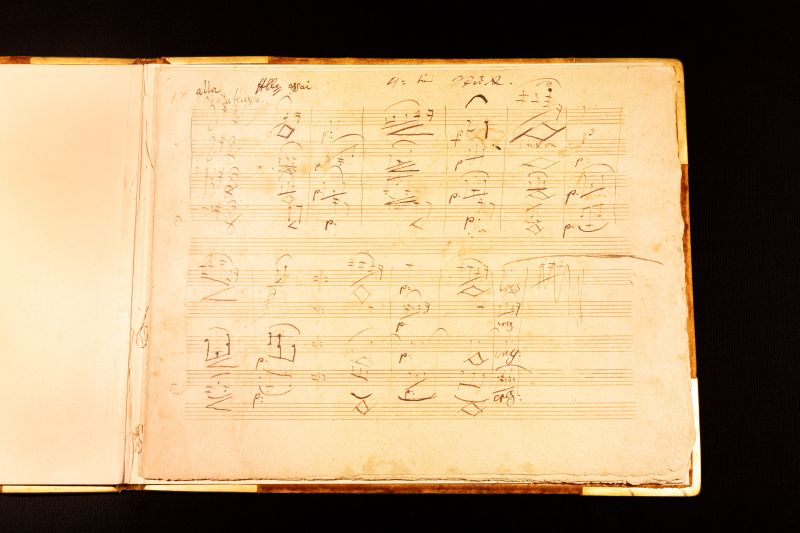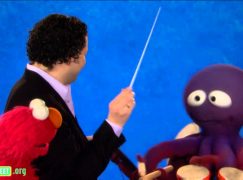Swiss mourn their foremost musical influence, 92
mainThe death is reported of Klaus Huber, an immensely influential composer and teacher whose Basle students included Brian Ferneyhough, Wolfgang Rihm and Kaija Saariaho. He was 92.
A frontrunner in the European avant-garde, Huber was published by Ricordi and collected by Paul Sacher. No single work stands out as a path-breaker but the totlity of hos outputn sits at the heart of the modernist project.






RIP Klaus Huber.
I love the sentiment expressed by one of the musicians on the second video regarding the sense of “change” that occurs when dealing with dissonance in Huber’s music. I think that could be generalized to most any atonal or non-traditional harmonic composition: our preconceptions of “right” or “wrong” must adjust thru the course of listening or performing in order to better understand the sounds, despite our expectations and initial reactions.
Wonderful sentiments. I’m ready to explore some of Huber’s music.
In ‘Blätterlos’ there are no dissonances, because everything is colour. Dissonances only exist in a structure where notes relate to each other in a hierarchical way, forming a narrative. In this piano piece everything is an ‘acoustic event’ in and for itself, and entirely disconnected; a slightly unifying gesture is created by the repetition of the secund in similar rhythm, an ‘acoustic object’ which functions as a structural centre, like a stick in a mud pool. (There’s nothing against mud, it is perfectly natural and does not harm anybody.)
The micro-tones as explained in the 2nd video, inviting the listener to leave his awareness of tone-relationships behind, rests upon the misunderstanding that hearing and playing ‘in tune’ is merely an acculteration, a listening habit created by the Western tradition, and thus a cultural construct which can be replaced by any other cultural construct like the ‘different intervals’ in Arabic traditional music. But in reality, both Western traditional tuning and Arabic microtonality are based upon the workings of the harmonic series: Western modern tuning is an equalized adaptation of the pure intervals of the harmonic series to make more combinations possible, and in Arabic music the microtones are expressive deviations from the pure intervals – especially octave and fifth – to be experienced as such. In both approaches, tonality as a natural hierarchical force is a given. Hearing ‘in tune’ in Western music is thus much more than merely a cultural construct, it is the fine-tuning of strong relationships. Notions of ‘right and wrong’ are thus dependent upon context and should not be ‘left behind’ as merely habits.
By analogy: So you mean that the intensive “dissonances” in Morton Feldman’s music (I’m thinking particularly in “For Samuel Beckett” but there are more examples, his music is full of “beautiful” dissonances) are really not dissonances? On the other way, are Schönberg’s dissonances “real dissonances” (because sounscious dissonances)?
…”couscious”…
COUNSCIOUS
Sorry for the typos, texting too fast…
Feldman’s ‘dissonances’ are indeed no dissonances but colourings….
http://www.youtube.com/watch?v=PgS37X4P2hM
(I think this is one of the most beautiful sonic art works ever)
A dissonance is a combination of tones where the clash of different overtones create a ‘rubbing’ in the air waves, and when it is followed by a combination where the overtones are in accordance with the harmonic series (are ‘in harmony’), the effect is one of a tension followed by a resolution; or: a sound which a high level of conflict followed by a sound in harmony. Upon this phenomenon (which is not merely a cultural construct but a fact based on physics) is based the entire tradition of narrative and rhetoric in classical music.
Schoenberg used dissonance in the traditional, classical sense up till 1923 when he began to compose in 12-tone system. The extremely rough and dissonant works like Five Orchestral Pieces are still classical music using the dissonant/consonant relationship because the dissonances work as extreme tension, they refer to the classical symphonic writing and hence, they can be so shocking and disturbing: ‘expressionistic’.
So, this is very dissonant music, and there are differences in the degree of dissonance so that there is a flow of energy from one moment to the next:
http://www.youtube.com/watch?v=gywAYqIA4x0 (ignore the silly images)
But in the following 12-tone work, the notes are isolated blips in a neutral field, with here and there gestures like music, but it sounds like a caricature of music – not because the listener does not like it but because it IS a caricature (unintentionally): the notes are organised following a system which creates an avoidance of rhetoric with consonances and dissonances…. it is very static, the texture move but the notes do not take part, they are random. So, here there are no dissonances, ony wrong notes which don’t fit into a musical pattern, they are mere colour like in Feldman, only differently. What the two styles have in common, is being static at the inside (the notes).
http://www.youtube.com/watch?v=fzAFalLbXxg
I like the expression of “the totlity of hos outputn” in this context.
Someone’s typing with oven mitts, apparently.
I would say thinking with oven mitts
The Swiss had also a REAL composer: Frank Martin, who was ‘less influential’ because he did not go along with postwar fashions:
http://www.youtube.com/watch?v=hTkbjOzsLCI
This composer was certainly not a “foremost influence” on my music, although I am Swiss ! I played his “Erinnere Dich an G…” for solo double bass and ensemble which I liked. Not ecstatic about it though. An era passes by, like Boulez, Berio, Stockhausen … RIP.
Although these people forcefully rebelled against nature, in the end it overtakes them anyway.